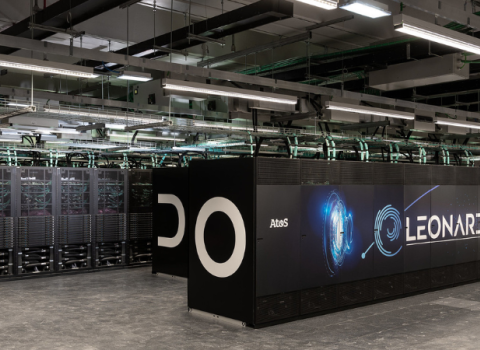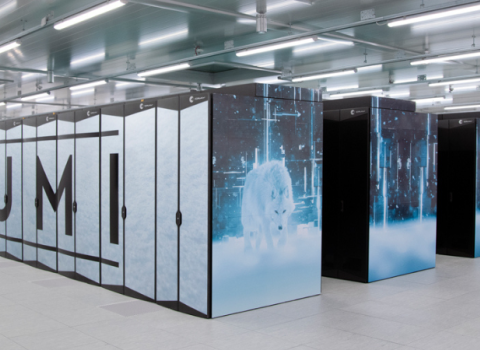The three projects coordinated by BSC have a total budget of 19.6 million euros
EuroHPC JU aims to pool resources to develop exascale supercomputers based on European technology to process large amounts of data.
The Barcelona Supercomputing Center (BSC) has been selected as coordinator of three research projects of the call launched by the EuroHPC Joint Undertaking to promote the research and development of the new supercomputers of the future. In its first call, EuroHPC has selected 20 projects, of which the BSC coordinates three and participates in another six. The projects coordinated by BSC have a global budget of 19.6 million euros, 50% funded by EuroHPC JU and the other 50% by the partner’s national governments.
BSC leads eProcessor, (European, extendable, energy-efficient, energetic, embedded, extensible, Processor Ecosystem) which aims to build a new open source out-of-order (OOO) processor. The objective is to deliver the first completely open source European full stack ecosystem based on a new RISC-V CPU. eProcessor will be extendable (open source), energy efficient (low power), extreme-scale (high performance), suitable for uses in HPC and embedded applications, and extensible (easy to add on-chip and/or off-chip components).
Another of the projects led by BSC is eFlows4HPC (Enabling dynamic and Intelligent workflows in the future EuroHPCecosystem). To enhance the features of current workflow environments, eFlows4HPC aims to deliver a workflow software stack and an additional set of services to enable the integration of HPC simulation and modelling with big data analytics and machine learning in scientific and industrial applications. To widen the access to HPC to newcomers, the project will provide HPC Workflows as a Service (HPCWaaS), an environment for sharing, reusing, deploying and executing existing workflows on HPC systems. The project aims to demonstrate through three application Pillars with high industrial and social relevance: manufacturing, climate, and urgent computing for natural hazards.
NextSim (CODA: Next generation of industrial aerodynamic simulation code) is the third project led by BSC. Today's cutting-edge industrial simulators are not taking full advantage of the immense capabilities of new HPC hardware architectures. The project will investigate how to advance the development of these tools through combined algorithm and HPC research with the European aviation industry. NextSim will focus on meeting the needs of the European aeronautical industry, with the development of the aerodynamic flow simulator CODA (Finite Volume and high-order discontinuous Galerkin schemes), which will be the new reference simulator for aerodynamic applications within the AIRBUS group and will have a significant impact on the aeronautical market.
The other projects in which the BSC participates are: ADMIRE (Adaptative multi-tier intelligent data manager for Exascale), DEEP-SEA (DEEP-Software for exascale architectures), ExaFOAM (Exploitation of exascale systems for open-source computational fluid dynamics by mainstream), HEROES (Hybrid eco responsible optimized European solution), REGALE (An open architecture to equip next generation HPC applications with exascale capabilities) and TEXTAROSSA (Towards EXtreme scale Technologies and Accelerators for euROhpc hw/Sw Supercomputing)
About EuroHPC
The European High Performance Computing Joint Undertaking (EuroHPC) launches calls for proposals to fund research and innovation activities that will help Europe to remain globally competitive in the field of supercomputing.
The mission of the EuroHPC JU is to develop, deploy, extend and maintain an integrated world-class supercomputing and data infrastructure in the European Union (EU) and to develop and support a highly competitive and innovative HPC ecosystem.
The EuroHPC JU aims at equipping the EU by early 2021 with an infrastructure of petascale (capable of at least 1015 calculations per second) and precursor to exascale supercomputers (capable of at least 1018calculations per second), and developing the necessary technologies and applications for reaching full exascale capabilities around 2022 / 2023.
This article was first published on 3 March by BSC.





 A unique international forum for public research organisations and companies to connect their external engagement with strategic interests around their R&D system.
A unique international forum for public research organisations and companies to connect their external engagement with strategic interests around their R&D system.